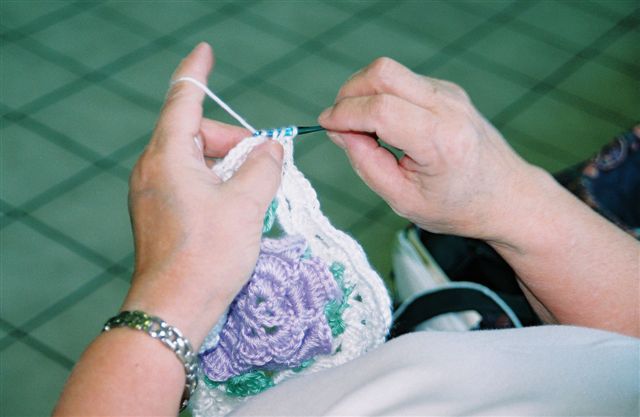You will need
- hook;
- thread.
Instruction
1
Follow the chain of air loops of the desired length. You should have so much polytypical with the stitches, how much you scored units, plus another pair of eyelets.
2
Count the third loop from the hook (some knitters count the fourth one) and knit in her first polytypic with the stitches. For the first step is to throw the thread on the rod of the working tool and hold it with your finger to yo does not come loose.
3
Enter the stem of the hook into the loop and re-throw the thread; pull it through the shackle loop.
4
Throw a working thread again, and now pull it through both from the loops and yo, located on the hook.
This is the first solid column.
This is the first solid column.
5
Do yo; insert hook into the next loop air circuit; pull it through the thread and make a new polytypic with the stitches described above. Also continue to work to end of row.
6
Do not tighten the working thread too much, otherwise it will be difficult to introduce the hook into a tight loop. It is recommended to execute the last loop on the hook with a large handle; after promazyvanija next loop gently pull the shackle enlarged to the required size. In this case, the knitted fabric is more lightweight and flexible.
7
Vivaria at the end of the first row of the columns a couple of sturdy loops. They will be a "step" to the next row; at the same time these lifting loops are equal to the first strong post in the series.
8
Work flip. Vymazyvaja polytypic without nakida in the second loop of the previous row; work pattern.
Note
Always read the knitting to achieve the desired relief pattern! Polytypic knit with nakida can be different, and this will directly depend on the pattern of the finished product. Pay attention to the walls of the loops. Solid bars promazyvaetsya of the three thread handles in one go. Usually the thread (which jumped on the rod of the hook before running the loop) is parallel to the walls. There are other ways: promazyvanie polytypical with stitches only back or only front.
Useful advice
If you perform a tight knit, at the end of the series you'll need two lifting loops; weaker knitting is enough of one.
